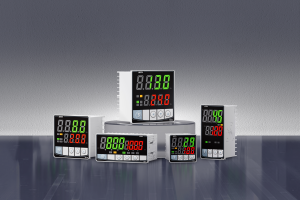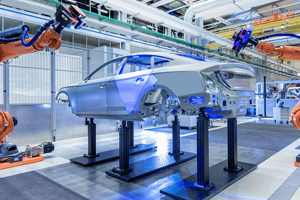Understanding PID Control Systems: Components, Working, and Applications
Learn about PID control systems, their components, working principles, types, applications, advantages, and tuning methods. Discover how PID controllers provide precise and stable control in various industrial applications.
1.Introduction
Proportional-Integral-Derivative, or PID control systems are an efficient feedback control loop mechanism used extensively in industrial control systems. Their primary role is maintaining desired output by minimizing errors between setpoint and actual output; PID controllers play an essential part in temperature, pressure and speed control applications due to their precise yet stable control abilities.
2.Components of PID Control System
A PID control system comprises three primary elements.
1. Proportional (P) Component: This component produces output proportional to current error values and helps reduce overall errors by adapting output control accordingly; this approach helps minimize overall errors but cannot completely eradicate steady-state error.
2.
Integral (I) Component: This integral component accumulates past errors over time and integrates them to produce control output, effectively mitigating steady-state error by altering output based on cumulative past error accumulations.
3. darui Derivative (D) Component: The derivative component forecasts future errors based on changes to current errors, helping improve control system stability and response times by acting like a damping effect.
3.Working Principle of PID Control Systems
PID control systems work by continuously calculating error values as the difference between desired setpoint and actual output, using proportional, integral, and derivative terms to minimize them. A feedback loop mechanism ensures that output retuns to its original intended state continuously.
4.Types of PID Controllers
There are various kinds of PID controllers, each offering specific benefits and applications:
1. On/Off Controllers: These controllers offer simple yet robust solutions, providing full on/off capability based on any error value detected, making them suitable for systems where precise control is not essential.
2. Proportional Controllers: Proportional controllers alter output proportionally with any error value, providing greater control than ON/OFF controllers but may still contain steady state errors.
3. Standard PID Controllers: PID controllers combine proportional, integral and derivative components in order to deliver precise yet stable control, making them popularly utilized by industrial organizations because of their ability to eliminate steady-state errors while increasing system stability.
5.Applications of PID Control Systems
PID control systems have numerous uses across industries:
1.
Temperature Control: PID controllers are commonly utilized in heating and cooling systems to achieve consistent temperatures by adapting output heating or cooling based on any deviation in temperatures from desired.
2. PID Controllers Can Maintain Pressure: In processes where pressure control is vitally important, PID controllers adjust their output in order to keep that desired pressure at just the right levels. 3.
PID Controllers Are Essential: PID controllers are commonly employed in fluid flow systems to help manage flow rate by adjusting valves in accordance with any flow rate discrepancies that arise.
4. At Motor Control: PID Controllers are ideal for motor speed regulation by controlling input based on error indicators such as the motor's speed error.
6.Advantages of PID Control Systems PID control systems
offer several benefits that make them attractive investment choices:
1. Stability and Accuracy: PID controllers offer reliable control by continuously adjusting output based on errors detected during control output based on error values. 2. Flexibility and Reliability: These versatile controllers can be utilized across applications for consistent control performance.
Tuning Methods (PID Controllers) Tuning a PID controller involves adjusting its proportional, integral and derivative gains until they meet desired performance criteria. Some common tuning techniques for PID controllers include:
1. Ziegler-Nichols Method: This technique involves setting both integral and derivative gains to zero while gradually increasing proportional gain until oscillation of system occurs, whereupon its maximum gain and period can then be used to calculate PID gains.
2.
Additional Tuning Methods: Other tuning techniques such as the Cohen-Coon method or trial-and-error can also be utilized to optimize PID controllers according to specific application needs.
- What is a PID Controller Smoker? Benefits, Types, and How to Use
- How to Use a PID Temperature Controller Step-by-Step in This Comprehensive Guide






















